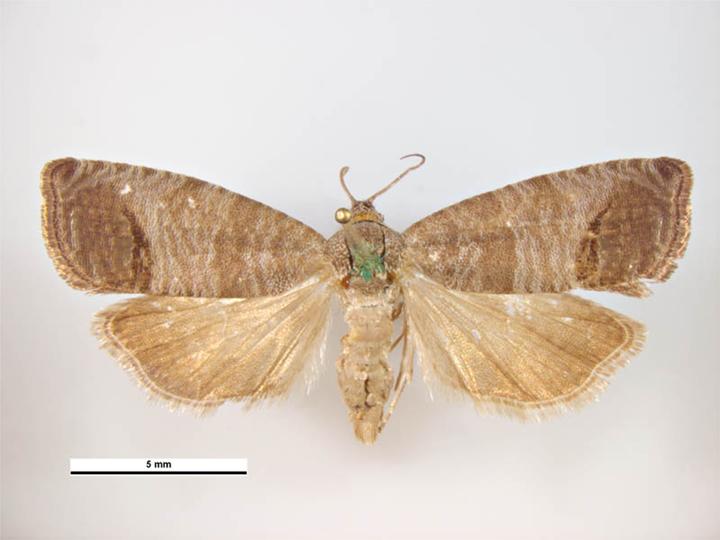Codling Moth

Scientific Name
Cydia pomonella
Description
Codling moths are small moths that are a major pest of fruit orchards. The adults are gray-brown with a modest wingspan, while the larvae are creamy white with dark head capsules. Larvae tunnel into fruits like apples and pears, creating entry holes and leaving behind frass, which leads to decay and reduced fruit quality.
Characteristics
Codling moths have a wingspan of about 1/2 inch. Their forewings are mottled with shades of gray and brown, providing camouflage against tree bark. The larvae are particularly damaging as they burrow into fruit, compromising both appearance and nutritional value.
Control Methods
- Organic sprays: Apply organic treatments such as neem oil, insecticidal soap, or horticultural oils during peak moth activity. Garlic-based or hot pepper sprays can also deter moths while preserving beneficial insect populations.
- Cultural practices: Practice crop rotation and intercropping to disrupt the codling moth life cycle. Use trap cropping to lure moths away from high-value fruit trees, and maintain proper fertilization practices to avoid overly vigorous, pest-prone growth.
- Preventive methods: Implement strict orchard sanitation by removing fallen and infested fruit. Use pheromone traps to monitor adult moth activity and establish early intervention thresholds. Prune trees to improve air circulation and reduce favorable conditions for infestation.
- Biological controls: Encourage natural enemies such as parasitic wasps, predatory beetles, and insectivorous birds. Consider using Bacillus thuringiensis (Bt) formulations to target larvae without harming beneficial organisms.
- Mechanical physical: Utilize physical barriers like fruit bags to protect individual fruits. Deploy sticky traps to capture adult moths, and routinely remove and destroy infested fruit to prevent further spread.
Natural Enemies
- Parasitic Wasps
- Predatory Beetles
- Insectivorous Birds